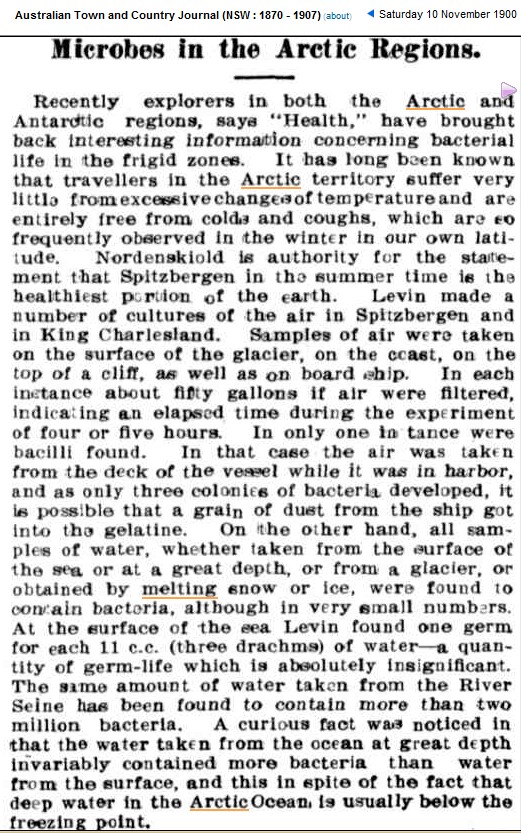Scientific American reports in their May, 2012 edition
BOZEMAN, Mont.—Locked in frozen vaults on Antarctica and Greenland, a lost world of ancient creatures awaits another chance at life. Like a time-capsule from the distant past, the polar ice sheets offer a glimpse of tiny organisms that may have been trapped there longer than modern humans have walked the planet, biding their time until conditions change and set them free again.
With that ice melting at an alarming rate, those conditions could soon be at hand. Masses of bacteria and other microbes – some of which the world hasn’t seen since the Middle Pleistocene, a previous period of major climate change about 750,000 years ago – will make their way back into the environment.
Melting Glaciers Liberate Ancient Microbes: Scientific American
The only ice that is melting at an alarming rate is the brain freeze between their ears. Here is a story from 1900.
all samples of water, whether taken from the surface of the sea or at a great depth, or from a glacier, or obtained by melting snow or ice, were found to contain bacteria, although in very small numbers. At the surface of the sea Levin found one germ for each 11 cc. (three drachms) of water-a quantity of germ-life which is absolutely insignificant.



That 1900 article would not sell magazines or create hysteria among the lowest common denominator. What lousy journalism!
And maybe new bacteria could give us to a new route for antibiotics…
http://earlyamericanautomobiles.com/1900.htm